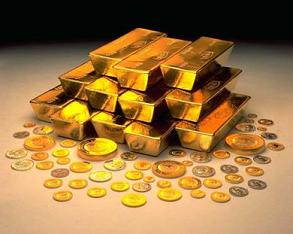The Role of Gold in the World Monetary System
What Is India and China Doing That Malaysia Has Neglected To Do?

On 27th August 2009 I wrote an article, “An Appeal To Malaysia’s Prime Minister Cum Finance Minister – Re-Examine the Country’s Strategy For Foreign Reserves”, to urge our Prime Minister to examine the critical need to diversify our foreign reserves, specifically to increase our holdings of gold.
My call was unheeded.
I drew the attention of our Prime Minister to the 14th August 2009 Central Banks Gold Agreement (CBGA) specifically:
“Gold will remain an important element of global monetary reserves.”
• The gold sales already decided and to be decided by the undersigned institutions will be achieved through a concerted program of sales over a period of five years, starting on 27th September 2009, immediately after the end of the previous agreement. Annual sales will not exceed 400 tonnes and total sales over this period will not exceed 2000 tonnes.
• The signatories recognize the intention of the IMF to sell 403 tonnes of gold and noted that such sales can be accommodated within the above ceilings.
• This agreement will be reviewed after five years.“It is significant to note that the IMF intends to sell 403 tonnes of gold and it is a no-brainer to venture a guess as to who will be the main buyer. China is desperate to unload its US toilet papers for gold and it has to be done carefully, as such sales ‘will be accommodated within the above ceilings.’ ”
I also drew the attention of the Prime Minister to the following data:
“The current situation of key European Central Banks’ gold reserves as a percentage of their total reserves are as follows:
France: 73%
Germany: 69.5%
Italy: 66.1%
Netherlands: 61.4
Switzerland: 37.1%In contrast, the key Asian Central Banks’ and Russia’s gold reserves are as follows:
Russia: 4%
India: 4%
Taiwan: 3.8%
Japan: 2.1%
China: 1.8%
Given this state of affairs, any sales by European central banks under the 3rd CBGA will not depress gold prices, as it will be inevitable for the underweighted Asian central banks to pick them up so as to bolster their miniscule reserves in gold. For more data, please reference World Gold Council.”
China has taken heed of the need to bolster her strategic reserves of gold. She has in fact called upon her citizens to accumulate gold!
Yesterday, Bloomberg reported that, “Gold jumped to a record after India’s central bank bought 200 metric tons of the metal from the International Monetary Fund, heightening speculation about more official purchases… The $6.7 billion sale to the Reserve Bank of India is ‘the biggest single central-bank purchase that we know about for at least 30 years in such a short period,’ said Timothy Green, author of ‘The Ages of Gold.’ ‘The only comparable event was the U.S.’s steady purchases in the 1930s and 1940s.’”
What is significant is that India has taken up 50% of the IMF‘s allocation of 403 tonnes.
India has now come on board to the need to diversify their foreign reserves.
I believe that in the months to come, other Asian central banks will follow this lead.
I hope Malaysia will not remain in a state of denial.
And once again, I have shown to be ahead of the curve. By the first quarter of 2010, we will witness the 2nd wave of the global financial tsunami. The hoarding of cash by the global big banks will not be enough to stem the tide.
The 2nd global tsunami will be bigger and more devastating than the first. Be forewarned.
Malaysia’s recent budget has not address the fundamental issues.

